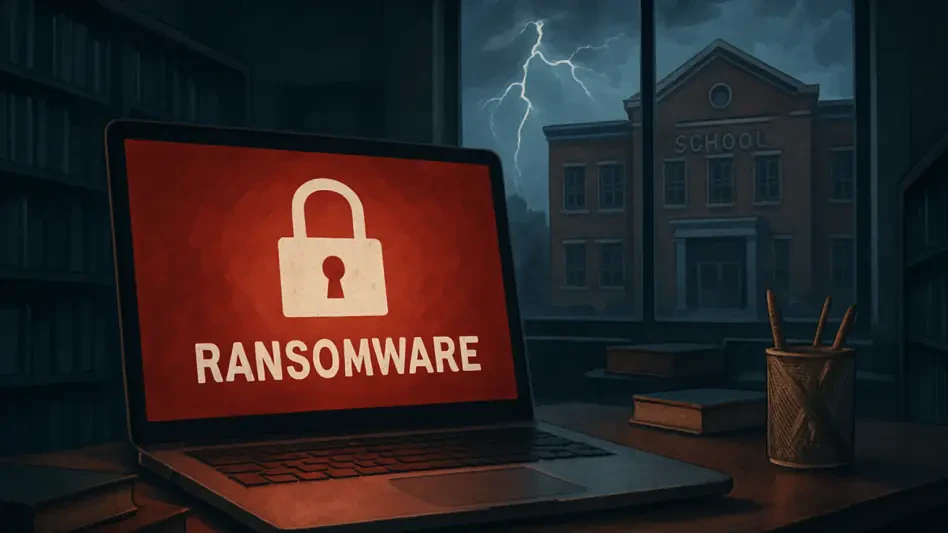In an era where digital threats are constantly evolving, organizations must adopt robust cybersecurity measures. Major-General Jonathan Shaw emphasized the need for practical strategies and proactive stances to combat these ever-growing threats. This article explores key approaches and insights on building cyber resilience effectively.
Understanding Cyber Resilience
Despite widespread awareness about cybersecurity, many organizations still fail to take concrete steps toward implementing a resilient defense strategy. This gap between knowledge and action can leave critical systems vulnerable to attacks. By transitioning from merely understanding threats to actively addressing them, companies can significantly enhance their defenses. Cyber resilience isn’t just about prevention but also about being prepared to respond and recover swiftly when breaches do occur.
What does cyber resilience really mean? It encompasses not just the ability to prevent attacks but also the capacity to respond and recover swiftly when breaches occur. Organizations need a multi-faceted understanding of resilience to craft effective strategies. This includes innovative approaches, comprehensive assessments of potential vulnerabilities, and continuous improvement of defense mechanisms. A resilient strategy means adopting a holistic approach that acknowledges the inevitability of breaches and focuses on quick recovery and sustained operation in the face of disruptions.
The Critical Role of Leadership
Evolving Leadership Models
Traditional leadership structures often hinder cybersecurity. Senior leaders are typically removed from the technical frontlines, creating a disconnect. A shift towards decentralized decision-making, coined ‘mission command,’ empowers frontline experts to act quickly and effectively. This decentralization is critical because it places decision-making power in the hands of those who are most knowledgeable about and closest to the evolving threats. Leaders must recognize that their traditional strategies may no longer be sufficient and must instead focus on empowering their teams to make timely and informed decisions.
Building a leadership model that supports cybersecurity involves fostering trust and developing accountability at all organizational levels. Leaders need to ensure that all employees understand the importance of cybersecurity and their role in maintaining it. This involves regular training and a commitment to creating a security-conscious culture. Moreover, the recognition that cybersecurity expertise is often housed at the operational level means that these front-line experts must be supported and empowered to make autonomous decisions in real time.
Building a Proactive Culture
Fostering a culture that prioritizes cybersecurity is essential. Leaders must actively champion cybersecurity initiatives, ensuring all organizational levels understand their roles in protection efforts. This cultural shift can be the bedrock of a resilient organization. By embedding cybersecurity into the organizational ethos, companies can ensure that every employee becomes a potential defender against digital threats. For this to happen, leadership must be visibly and vocally supportive of security measures and practices.
Creating a proactive culture also means incentivizing and rewarding behaviors that enhance security. Regular drills, simulated attacks, and ongoing education can help to keep cybersecurity at the forefront of everyone’s mind. Leaders should set the tone by prioritizing cybersecurity in every aspect of operations, from product development to customer service. This approach ensures that cyber resilience is not just a policy but a core component of the organizational strategy.
Practical Strategies for Cyber Defense
Minimizing Exposure
Staying under the radar in the digital world can decrease the likelihood of attacks. While organizations must balance online visibility for marketing purposes, they should aim to reduce unnecessary exposure to potential threats. This means implementing stringent policies on what information is shared online and ensuring that all digital platforms and networks are secure. Minimizing exposure requires a thorough understanding of an organization’s digital footprint and taking proactive steps to manage it.
Techniques such as network segmentation, up-to-date firewalls, and robust encryption methods can help reduce exposure to potential cyber threats. Furthermore, ensuring that all systems and software are kept current with the latest security patches and updates is essential. These practical steps can significantly enhance an organization’s ability to stay under the radar and avoid becoming a target.
Preparing for Inevitable Breaches
Accept that breaches will happen. Rather than striving for an impenetrable system, focus on building resilience. Implement redundancy protocols and conduct regular training drills to ensure readiness for any eventuality. Preparedness involves having a comprehensive incident response plan in place that outlines the roles and responsibilities of each team member during a cyber incident. Regular training drills help to ensure that everyone knows what to do and can act quickly and effectively.
Companies should also invest in technologies that help in the rapid detection and response to breaches. Tools that provide real-time monitoring and advanced threat detection capabilities are essential. In addition, having backup systems and data recovery plans ensures that critical operations can continue, even in the event of a breach. This proactive approach means that a company can limit the damage and recover more quickly from cyber incidents.
Extending Security Beyond Core Systems
Securing Supply Chains
Cybersecurity isn’t just an internal issue. Third-party vendors can be vulnerable points of entry for attackers. Ensuring the security of supply chains is crucial for maintaining overall organizational safety. This requires a thorough evaluation of all potential vendors and partners to ensure they meet stringent cybersecurity standards. Contracts should include clear stipulations about cybersecurity practices and what measures must be in place to ensure mutual protection.
Regular audits and reviews of third-party security measures should be conducted to ensure ongoing compliance with security standards. This includes monitoring and assessing vendors’ cybersecurity protocols and their ability to respond to potential threats effectively. By taking a vigilant approach to supply chain security, organizations can mitigate the risks associated with third-party partnerships.
Holistic Approach to Cybersecurity
Adopting a comprehensive view that extends beyond immediate systems is essential. By considering the broader ecosystem in which an organization operates, risks that might otherwise be overlooked can be identified and mitigated. This holistic approach means understanding how data flows through the entire organization and where vulnerabilities may exist. It requires an integrated strategy that covers all aspects of an organization’s operations, ensuring that cybersecurity considerations are built into every process and decision.
Furthermore, a holistic approach involves collaboration across different departments and functions. Security should not be seen as just the responsibility of the IT department but as an organizational priority that affects every area of the business. By fostering a culture of shared responsibility, organizations can build more robust defenses and improve their overall resilience to cyber threats.
Addressing Emerging Threats
Challenging Misconceptions
Technological advancements like blockchain are often hailed as cybersecurity saviors but come with their own vulnerabilities. Organizations must stay informed and avoid over-relying on any single technology as a cure-all. Blockchain, while offering promising security features, can still be susceptible to attacks and should be integrated with other cybersecurity measures for comprehensive protection. Staying up-to-date with the latest research and understanding the limitations of new technologies is crucial for avoiding over-dependence on any single solution.
Moreover, companies should encourage continuous education and awareness among their security teams to comprehend the potential pitfalls and strengths of emerging technologies. Developing a realistic understanding of what technologies can achieve will help organizations integrate multiple layers of security measures effectively. This will create a more resilient defense system capable of addressing diverse and sophisticated threats.
Navigating Technological Shifts
With the growing influence of Chinese technology, adapting cybersecurity strategies to new and diverse threats is more crucial than ever. Understanding different development philosophies and potential risks is necessary to navigate this shift. Chinese digital influence may bring new technologies and processes that challenge traditional Western approaches to cybersecurity. This changing landscape requires organizations to stay vigilant and adaptable, incorporating diverse security measures that can address potential risks from various sources.
Adapting to these technological shifts means not only staying updated with global trends but also working towards creating international partnerships and collaborations. By engaging with diverse industries and understanding global cybersecurity standards, organizations can better prepare for the spectrum of emerging threats. Additionally, employing adaptive strategies and creating flexible frameworks will enable them to respond promptly and effectively to the rapidly evolving digital environment.
National and Global Perspectives
The Bigger Picture
National infrastructure attacks can have massive repercussions. The 2007 cyberattack on Estonia serves as a stark reminder of the vulnerability of national systems. Preparedness at a national level is essential to mitigate these risks. This includes developing robust national cybersecurity strategies and investing in the necessary infrastructure to protect critical systems. Governments should collaborate with private sector partners to share information about threats and vulnerabilities.
Training and public awareness campaigns are also critical components of national preparedness. By educating citizens about the importance of cybersecurity and the role they can play in maintaining it, the overall resilience of national infrastructure can be enhanced. National strategies should also include international partnerships and cooperation in order to address cyber threats that transcend borders.
Role of Non-State Actors
Black hats aren’t the only ones to worry about. Non-state actors, sometimes with state backing, present constant threats. Employing diplomatic and economic measures is crucial to addressing these actors effectively. These measures can include sanctions, diplomatic efforts to isolate malicious actors, and cooperation with international bodies to enforce cybersecurity standards. Law enforcement agencies need to be equipped with the skills and tools required to track and respond to non-state cyber threats.
Moreover, public and private sector collaboration is essential for identifying and mitigating risks posed by non-state actors. Sharing intelligence and best practices can help create a united front against these threats, making it harder for non-state actors to exploit vulnerabilities. By taking a comprehensive and collaborative approach, nations can enhance their ability to defend against these constantly evolving threats.
Building a Resilient Future
Proactive Measures
Embracing a proactive stance involves continually adapting to new threats. This includes regular assessments, updating protocols, and staying vigilant. The cybersecurity landscape is ever-changing—defensive measures should be too. Proactive measures involve not only addressing current vulnerabilities but also anticipating future threats. This requires a forward-thinking mindset, investment in advanced technologies, and continuous improvements in security protocols.
Organizations can establish dedicated cybersecurity teams tasked with continually monitoring threats and developing strategies to respond to new risks. Regular penetration testing, vulnerability assessments, and security audits should be part of an ongoing process to strengthen defenses. Being proactive means always being a step ahead, ready to respond to the next emerging threat before it can cause significant damage.
Community and Collaboration
In an age where digital threats continually evolve, it’s imperative for organizations to implement strong cybersecurity measures. Major-General Jonathan Shaw has underscored the importance of applying practical strategies and maintaining a proactive stance to effectively counter these growing threats. The need for robust defenses against digital attacks cannot be overstressed, as cyber threats are becoming increasingly sophisticated and difficult to predict. This article delves into various key approaches to building cyber resilience, providing insights into best practices and the importance of staying ahead of potential dangers. Emphasizing the role of vigilance and continuous adaptation, it is clear that an organization’s ability to defend itself in the digital realm is crucial. The focus should be on creating a culture of security awareness, investing in advanced technologies, and ensuring swift responses to incidents. By following these principles, organizations can strengthen their cybersecurity posture and better protect themselves against the ever-present risks in the digital landscape.







